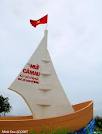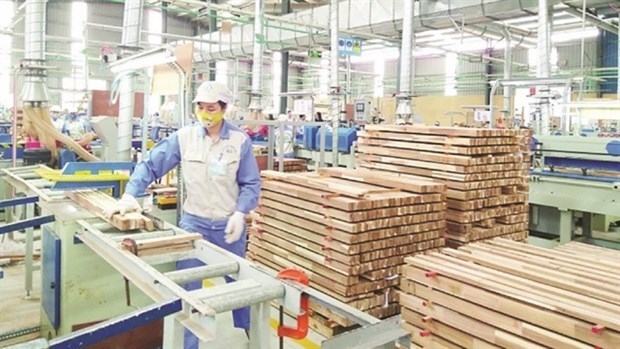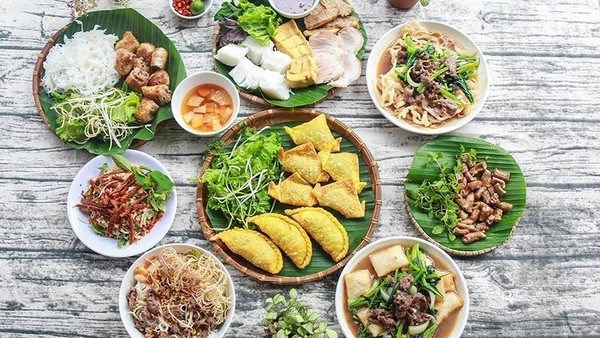Ca Mau province
Monday, January 18,2021
AsemconnectVietnam - Ca mau province’s overall plan on socio-economic development by 2020 to ensure conformity with the country’s strategy on socio-economic development and Mekong river delta region’s overall plan on socio-economic development
DEPARTMENTS
|
No
|
Project’s title
|
Location
|
Form of investment
|
Capacity
|
Counterpart
|
|
1
|
Cattle & Poultry Food Processing Factory
|
Industrial Park of Ward 8, Ca Mau City
|
100% + Joint-venture
|
24,000 tons of products/year
|
Department of Trade & Industry
|
|
2
|
Wood Processing Factory
|
Industrial Park of Ward 8, Ca Mau City
|
100% + Joint-venture
|
100,000-200,000 products/year
|
Projects Management Board of Department of Agriculture and Rural Development
|
|
3
|
High Quality Aquatic Products Processing Factory
|
Industrial Park of Ward 8, Ca Mau City, Trung Hoa Industrial Park
|
100% + Joint-venture
|
5,000 – 10,000 tons of products/year
|
Department of Agriculture and Rural Development
|
|
4
|
Industrial Shrimp Hatching
|
Provincial districts
|
100% + Joint-venture
|
1,000 - 2,000 ha
|
Department of Agriculture and Rural Development
|
|
5
|
Investment in infrastructure of Khanh An Industrial Park
|
Khanh An Industrial Park
|
100% + Joint-venture
|
360 ha
|
Projects Management Board of Department of Construction
|
I. Viewpoints
1. Ca mau province’s overall plan on socio-economic development by 2020 to ensure conformity with the country’s strategy on socio-economic development and Mekong river delta region’s overall plan on socio-economic development
3. To mobilize all resources to socio - economic development - exploiting maximum internal resources, combined with attraction of maximum external resources to invest in the province, especially capital, technology, high skilled labor.
5. Develop economic must be linked to political stability, ensure social order, improving people's knowledge, strengthen national defense and security consolidation, consolidate and improve operation political system , build strong administration.
II. MAJOR OBJECTIVES
1. Overall objectives:
- Develop economic with high speed, stable, accelerate construction of infrastructure. Strive in 2015, form economic structure of industry - service – agriculture; in 2020 build province of Ca Mau become developing socio - economic province, contribute positively to development of Mekong River Delta region and the whole country. people's living are improved and raised, security and defense always guarantee.
2.1. Economic
- Economic structure continues to shift towards positive, in particular: in 2010 agriculture 39.7% , industry 32%, services 28.3%; in 2015 agriculture 28.7% , industry 37.8%, services 33.5%; in 2020 agriculture 19.6% , industry 43.5%, services 36.9%.
- Total annually investment capital reaches 38% - 40% of GDP.
- Export turnover in 2010 reaches about USD 1 billion in 2015, reaches $ 1.4 billion – USD 1.5 billion and in 2020 reaches $ 1.8 billion - $ 2 billion. Value of exports per capita reaches USD 750 in 2010; in 2015 reaches USD 980 - 1,000 and $ 1,200 - $ 1300 in 2020.
- 100% urban population and 80% of rural population use hygienic water in 2010, in 2020 settle basic needs of clean water for urban and rural residents.
2.2. Society
- Rate of natural population growth below 1.2% in 2015 and reaches 1.1% in 2020. Population size in 2010 of about 1.33 million people; in 2015 about 1.418 million people; in 2020 about 1.5 million people.
- By 2010 20% of communes, wards and towns achieve basic universal education and strive to complete basic universal education by 2020.
- By 2010 all districts, provincial cities and 50% of communes, wards and towns have centers for cultural – sports activities, in 2015, to reach 100% of communes, wards and towns have centers for cultural – sports activities.
- By 2010, 95% of households, 85% of hamlets, 55% of communal units and 1-2 of districts; in 2020 85% - 90% of hamlet, 70% of communal units and 3-4 of district reach cultural standard.
- Complete national standard program on communal health as prescribed in 2010; reduce rate of malnourished children under 5 to below 16% in 2010, less than 10% in 2020.
- Percentage of trained laborers will reach 30% in 2010; reaches about 60% in 2020. Rate of agricultural workers decreases to 35% - 40% in 2020.
- Collection and treatment of solid waste reach 80% in 2010, reaching 100% in 2020.
- In 2010 to ensure that 100% of medical waste treated under regulations.
1. Fishery, agriculture and forestry:
- Develop fisheries, agriculture and forestry in direction of producing commodities and ensure raw materials for export processing industries, accelerate application of science and technology for production to improve economic efficiency, make production combining with fishing, agriculture and forestry for sustainable development. Average value of agricultural production in 2010 reaches VND 45 million / ha and reach 60 million per hectare in 2020.
- Breeding grew and was transformed towards goods production. The model of household industrial breeding was developed in large scale. The project on enhancing the herd of cow, improving the quality of pork, adopting highly productive breeds is entering its 1st phase. Some enterprises specialized in pig breeds; poultry breeds and exported animal husbandry products have been upgraded.
- Forestry was reorganized and developed towards social forestry, shifting from cutting timber to planting new forests, tending and protecting the existing ones. Planting defensive forests was kept in close relation with developing economic forests.
- Develop processing industry of seafood, agriculture and forestry towards increasing ratio of refined products, develop power industry basing on energy Ca Mau gas - electricity – fertilizer complex and attract to develop new industry of high technological content. Encourage industrial development, small industries and rural traditional villages.
- Develop industry and handicrafts associating with environmental pollution and ensure high and sustainable economic growth.
- Develop commercial network with participation of other economic sectors. Rearrange retail network, give priority on developing system of modern retail business, plan commercial advantages position in urban areas to construct trade and services zones. Focus on promoting trade, expanding foreign markets, promote export.
4.1. Population
Reduce rate of natural population growth to 1,2 % in 2010, 1,1% in 2020; population in 2010 is about 1,33 million people, about 1,5 million in 2015. Urban – rural population structure is 25% - 75% in 2010 and 40% - 60% in 2020.
- Promote development of education - training, increase investment and building school facilities, diversify types of schools and standardize teachers and education management staff.
4.3. Health care
- Improve efficiency of national target program on health care, promote socialization and protection of people's health care. Prevent, control effectively desease, ensure that all people should be provided with basic health services, access and use of high quality health services.
- Develop and upgrade hospital system, soon complete construction of provincial hospital and construction of specialized hospitals. Construct, upgrade health system at district level and commune level under national standard. Strengthen health staff, especially for rural areas, striving to reach average rate of six doctors and 22 patient beds per ten thousand people in 2010; 10 doctors and 25 beds per ten thousand people in 2020; rate of malnourished children under 5 reaches 16% and 10% in 2010 and 2020, respectively. By 2020, death rate of children under 1 year decrease to approximately 1%, death rate of children under age 5 fell below 2%.
- Connect closely between cultural development with socio - economic development, improve people's spiritual living, strengthen investment in cultural institutions, sports facilities under promoting socialization. At the same time, continuously improving quality of cultural and information activities, development of mass media activities with core of radio and television, creating new development on quality of movement " people unite to build cultural life "; implement conservation, restoration and promotion of value of historic, developing many kinds of sports, expand mass sport movement, participate in high sports achievements in some subjects.
- By 2010 95% of households, 85% hamlets, 55% of communes and 1-2 districts meet cultural standard. In 2020, 85% - 90% of hamlets, 70% of communes and 3-4 of districts meet cultural standard.
4.5. Poverty alleviation, employment and social security
- Implement well poverty reduction associating with restriction to the lowest relapse into poverty, to strive for in 2010 poverty rate fall below 10%, in 2020 poverty rate under standard of $ 2 per person per day reduce to below 10%.
- Enhance employment basing on training, vocational training, credit support, implementation of labor restructuring to increase proportion of industrial labor, services and promote development business forms, especially develop model of agricultural, farms enterprises...
5. Development of infrastructure
Mobilize resources for rapid development of socio - economic infrastructure, gradually building synchronous communication system, irrigation, electricity grid, urban infrastructure, industrial infrastructure, industrial clusters.
5.1. Transportation
Promote development of transport infrastructure including roads, waterways, sea and air routes, have enough to transport intra-region, gradually expand inter-regional transportation, is one of worthy gateways of the country to develop to the sea.
- Roads: invest in building south coastal corridor roads, Ho Chi Minh road ( Nam Can - Dat Mui), routes to avoid Highway 1A, line to avoid Highway 63, East sea coastal road ( Nam Can - Ganh Hao), west sea coastal road ( Tieu Dua – Dam Cung); invest in upgrading national Highway 63. Invest in building and upgrading roads connecting to marine economy centers including Tac Thu - Doc Rivers, Cai Nuoc - Cai Doi Vam, Tac Thu - U Minh - Khanh Hoi, Dam Doi - Tan Thuan. Construct newly ring roads of Ca Mau city linking industrial clusters, zones to main transport arteries. Build and upgrade roads in urban zones; build and upgrade rural roads, ensuring 100% of communes have motor roads to commuanal center.
- Waterway: upgrade waterways of Ca Mau - Ho Chi Minh City and Ca Mau - Kien Giang to meet inland waterways standard I and lines of Ca Mau - Doc Rivers, Ca Mau - Nam Can (by Centrally management) inland waterways standard level II ; upgrade provincial waterways to mmet standard level IV and district waterways standard level V.
- By Sea: investment to upgrade and expand port Nam Can, dredging door Bodhi meet transport by sea.
- By Air: to expand and upgrade Ca Mau airports to ensure medium range aircraft down, take off; upgrade and restore Nam Can airport to serve activities of tourism, oil services and maritime economy .
- Invest in constructing road - water transport system to meet needs of freight and travel of people and goods, meet requirements of socio - economic development.
5.2. Irrigation
Invest sub-regional system of water resources for fishery, agriculture, forestry production, combining with rural roads construction; invest in constructing and upgrading of sea dike system as planned.
5.3. Telecommunication
Continue to modernize, expand along with application of modern technologies in fields of post, telecommunications and develop rapidly information technology services.
Construct and operate safely Ca Mau industrial complex of gas - electricity - fertilizer, meet needs of electricity for the province and other provinces in the region. Develop grid of electricity transmission and distribution according to plan to ensure supply electricity security, continuity, reducing power loss.
5.5. Water supply
Investment in construct, upgrade and expand water supply systems for urban and residential areas step by step to meet clean water needs of the people. Building drainage and waste water treatment in urban areas, concentrated industrial clusters.
6. Science and technology
Promote application of science and technology for socio - economic development, encourage applications and renovation of technology, renovate scientific- technology management mechanisms, transfer strongly to mechanism of providing service under order; strengthen attraction, cooperation in science – technology with foreign and individuals organizations on basis of develop market of science and technology.
7. Environment
Increase protection and improvement of environment to ensure sustainable development, protection and restoration of biological diversity of wetlands; promote management and handling of environmental pollution, actively prevent natural disaster, timely rescue environmental incidents.
8. Defense and security
Incorporate closely economic development with social security and defense, security, building national defense posture associating with people's security posture, build strong defense areas, building capacity of regular army, gradually modern, paying attention to building self-defense militia and mobilization reserve. Building strong and clean police forces , enhance effectiveness of prevention to fight crime, create firm change in social order and safety.
IV. DEVELOPMENT PLAN ON SPATIAL AND TERRITORIAL
1. Local economic region: including districts of Cai Nuoc, Thoi Binh and Ca Mau city, area 130,721 ha, population in 2020 is about 600 thousand - 650 thousand people. It is predicted that average economic growth rate reaches 13% per; GDP per capita is about $ 2,600 in 2020. Economic structure of industry - service - agriculture in 2020 will be 45% - 40% - 15%, respectively.
2. Coastal and marine economic zones: including six districts, coastal region and territorial waters surface, island group, land area are 402,195 hectares, population in 2020 is about 850 thousand - 900 thousand people. This is a dynamic economic region of the province, expected economic growth rate higher than 1.2 to 1.3 times overall growth rate of the province, GDP per capita in 2020 of about $ 3,300. Economic structure of industry - service - agriculture of the region in 2020 is 42.7% - 35.2% - 22.1%.
Long Giang
Source: www.mpi.gov.vn

Plan on implementing Decision No. 327/QD-TTG dated March ...
Concretize viewpoints, objectives, tasks and solutions of the plan in accordance with practical conditions of the locality, associating ...Plan on implementing national environmental protection ...
Implementation plan of marine aquaculture development ...
Program on conservation and development of Vietnamese ...
Plan on improving quality of human resources to 2025 and ...

Efforts taken to turn culinary culture into national ...
The Vietnam Cuisine Culture Association (VCCA) is taking steps to implement a project to build and develop Vietnamese culinary culture ...Vietnamese cuisine making a name for itself with ...
Vietnam advance to next round of AFC U20 Women’s Asian Cup
Cultural tourism and traditional values promoted through ...



